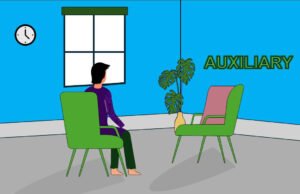
Dialectical Behavior Therapy (DBT): Techniques, Benefits, and How It Works
Dialectical Behavior Therapy (DBT) is a specialized form of cognitive-behavioral therapy originally developed by Dr. Marsha Linehan to treat individuals with Borderline Personality Disorder (BPD). Over time, DBT has been proven highly effective not only for BPD but also for other mental health conditions such as depression, anxiety disorders, relationship conflicts, and even substance abuse.
DBT focuses on teaching clients skills to manage intense emotions, reduce harmful behaviors, and improve relationships. Although DBT was designed as a structured group therapy model, many of its tools and techniques can also be applied in individual therapy sessions and practiced independently by clients in daily life.
What Does Dialectical Behavior Therapy (DBT) Mean?
The term dialectical refers to the idea of balancing acceptance and change. DBT teaches that two seemingly opposite things can both be true—for example, “I am doing the best I can” and “I need to do better.”
DBT helps clients:
Accept themselves and their experiences (validation).
Work toward positive change (behavioral adjustments).
How Does DBT Work?
DBT combines cognitive-behavioral strategies with mindfulness practices. A therapist guides clients through four key modules:
Mindfulness: Learning to stay present in the moment and observe thoughts without judgment.
Example: Focusing on breathing instead of getting lost in anxious thoughts.Distress Tolerance: Building healthy coping strategies to handle crisis situations without resorting to self-harm or destructive behaviors.
Example: Using grounding techniques instead of impulsive reactions.Emotion Regulation: Identifying and managing intense emotions like anger, sadness, or anxiety.
Example: Tracking emotions in a journal and practicing relaxation techniques.Interpersonal Effectiveness: Developing communication skills to build healthy relationships, set boundaries, and resolve conflicts.
Example: Using assertive communication instead of shutting down or lashing out.
From Group Therapy to Individual Application
DBT was initially designed as a structured group therapy program, where participants learn and practice skills together. However, the tools and techniques can also be applied in individual therapy sessions or even used independently by clients in daily life.
In Individual Therapy: A therapist helps the client apply DBT skills to personal challenges, practicing techniques such as mindfulness or role-playing difficult conversations.
Self-Practice: Once clients learn DBT tools, they can practice them daily without constant therapist guidance—making DBT a lifelong skill set for emotional well-being.
This unique flexibility makes DBT effective both in clinical settings and as a self-help framework.
Duration and Session Structure
Session Length: Usually 45–60 minutes per session.
Duration of Treatment: DBT programs often last 6 months to 1 year since the skills require consistent practice.
Homework Practice: Clients are encouraged to keep diary cards and complete exercises between sessions to strengthen their skills.
Mental Health Problems Treated with DBT
Although DBT was originally designed for Borderline Personality Disorder (BPD), research now shows it is highly beneficial for a wide range of conditions, including:
Borderline Personality Disorder (BPD)
Depression and Persistent Low Mood
Anxiety Disorders (Generalized Anxiety, Social Anxiety, Panic Disorder)
Bipolar Disorder (as an adjunct treatment)
Post-Traumatic Stress Disorder (PTSD)
Substance Abuse and Addiction
Self-Harm and Suicidal Behaviors
Eating Disorders (Bulimia, Binge Eating)
Relationship and Couple Issues
Anger and Stress Management Problems
This versatility makes DBT a powerful therapeutic approach for both severe emotional dysregulation and everyday psychological challenges.
Ways DBT Can Be Applied
DBT can be delivered in multiple formats:
Group Therapy: The classic model where participants learn DBT skills together, practice exercises, and share progress.
Individual Therapy: One-on-one sessions tailored to personal needs, focusing on applying DBT tools to real-life challenges.
Telephone Coaching: Some therapists offer short calls between sessions to help clients apply DBT skills in difficult situations.
Self-Help Practice: Once trained, clients can independently use DBT techniques daily to regulate emotions, handle stress, and improve relationships.
Final Thoughts
Dialectical Behavior Therapy (DBT) is more than just a treatment for Borderline Personality Disorder—it’s a structured, skill-based therapy that empowers people to take control of their emotions and behaviors. By combining acceptance and change, DBT teaches clients how to live a balanced, healthier, and more fulfilling life.
Whether practiced in group settings, individual sessions, or through self-help exercises, DBT equips clients with lifelong tools to manage stress, improve relationships, and stay emotionally resilient.
If some one struggling with BPD, depression, anxiety, or relationship issues, DBT could be the life-changing approach he/she needs.
